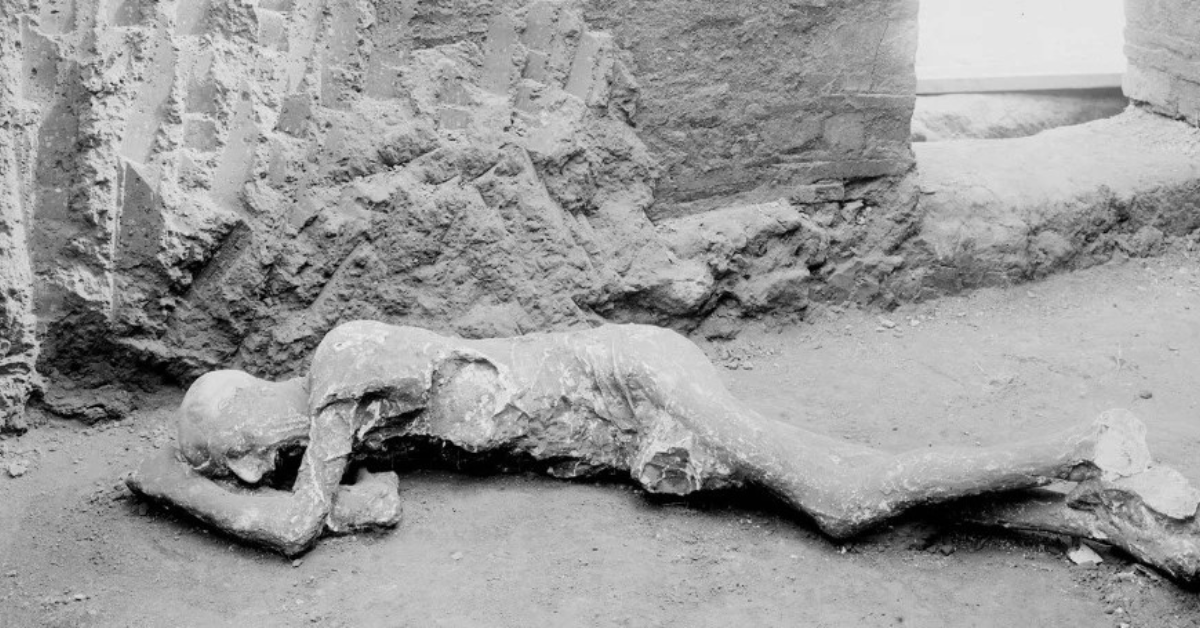New scientific discoveries are rewriting the tragic stories of Pompeii, the ancient Roman town frozen in time by the eruption of Mount Vesuvius in A.D. 79. DNA analysis of Pompeii’s victims is now challenging age-old assumptions about who these people were and how they related to each other, bringing a fresh and powerful perspective to a story that has fascinated the world for centuries.
For over 1,900 years, Pompeii remained buried under layers of ash and pumice, with thousands of its citizens lost in the disaster. The town was accidentally rediscovered in 1599, but its full excavation did not begin until 1748. Since then, archaeologists have unearthed a wealth of Roman artifacts, stunning frescoes, intricate mosaics, and, most hauntingly, the human remains of those who couldn’t escape. These remains were preserved as eerie casts, created by filling the spaces left behind by decomposed bodies with plaster, giving us an unsettling yet invaluable glimpse into the lives and last moments of Pompeii’s people.
For nearly two centuries, experts have attempted to piece together the lives of these victims, often based on their physical positions and surroundings. This led to certain interpretations, such as identifying one figure wearing a bracelet and holding a child as a mother, or assuming two people embracing in death to be sisters. But recent DNA testing is turning these assumptions on their heads.
A team of 18 genetics and biology experts from the United States and Italy recently conducted a groundbreaking DNA study on bone samples from 14 of these plaster casts. Unlike previous studies, which used DNA from separate bones or other artifacts found in Pompeii, this marks the first time DNA has been successfully extracted and analyzed directly from the casts. To their surprise, the results didn’t align with the stories long associated with these figures.
One cast, known as the “House of the Golden Bracelet” duo, was thought to show a mother cradling her child in her final moments. However, DNA revealed that the adult was actually a man who was not biologically related to the child. Another pair, previously believed to be sisters or perhaps a mother and daughter due to their embrace, turned out to include at least one male. The study, published in Current Biology, highlights how modern interpretations of ancient relationships may impose today’s cultural norms on a distant past that had its own unique social structures and definitions of family.
The study also sheds light on Pompeii’s diverse population. Genetic evidence shows that many residents had ancestry from the eastern Mediterranean, suggesting that Pompeii was a cosmopolitan hub within the Roman Empire. Situated near one of the busiest ports of the time, the town attracted people from across the empire, reflecting the mobility and multicultural nature of Roman society. As historian Steven Tuck notes, this diversity challenges the notion that Pompeii’s inhabitants were solely Roman by heritage, painting a more complex picture of daily life in this ancient city.
Yet, researchers remain cautious about replacing old assumptions with new ones. Alissa Mittnik, the lead geneticist from Harvard Medical School, emphasized that the purpose of the study was not to build new narratives but to encourage a more scientifically accurate and respectful understanding of Pompeii’s people. She acknowledges that some of those individuals may have been enslaved or served in various roles within complex Roman households, yet cautions against making new assumptions without evidence.
These findings remind us of the importance of approaching history with humility, recognizing that our interpretations are often colored by our own experiences and expectations. As David Reich, a coauthor of the study, reflects, “Modern assumptions about gendered behaviors may not be reliable lenses through which to view data from the past.”
The remains of Pompeii, including its people, still offer secrets for scientists to uncover. With each new technological advancement, we gain a clearer, more complex view of life in this once-thriving Roman town. While Pompeii’s plaster casts have long stood as symbols of a tragic moment frozen in time, they are now evolving into symbols of scientific progress and cultural reflection, encouraging us to look at the past with both curiosity and respect.
